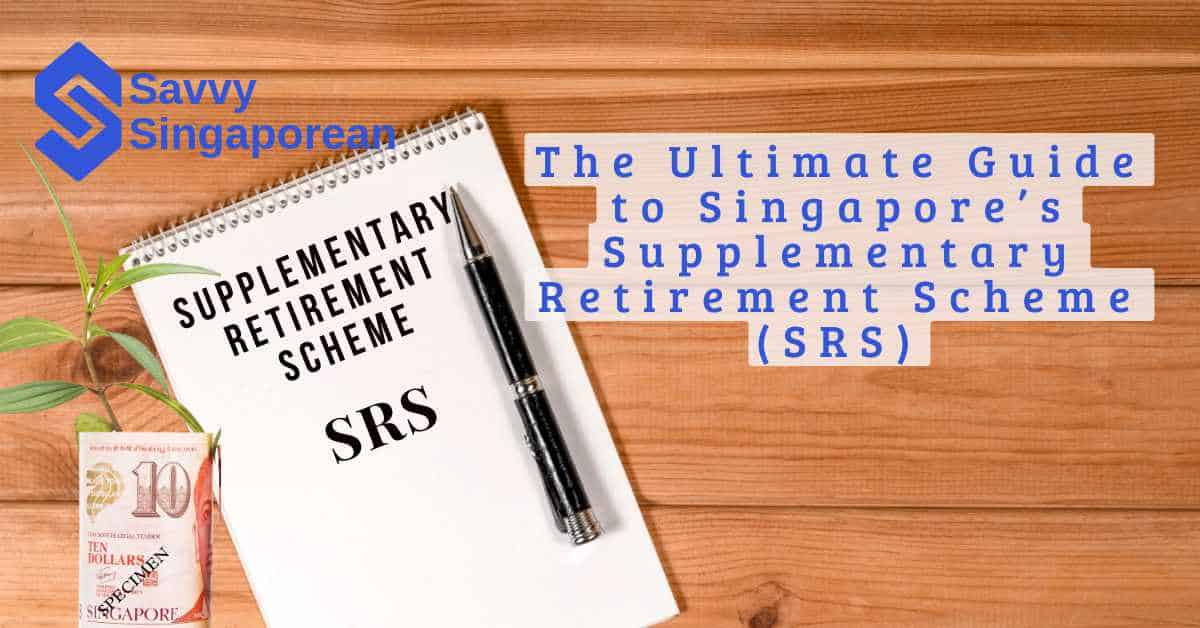Introduction: What is the SRS?
The Supplementary Retirement Scheme (SRS) is a voluntary savings program in Singapore designed to complement the Central Provident Fund (CPF). It offers Singaporeans, Permanent Residents (PRs), and foreigners working in Singapore an opportunity to save for retirement while enjoying tax benefits.
Key Features:
- Voluntary Participation: Unlike CPF, contributing to SRS is optional.
- Tax Incentives: Contributions reduce your taxable income.
- Flexible Investments: Choose from a range of investment options to grow your savings.
- Deferred Withdrawals: Access your funds at retirement age with favorable tax treatment.
Eligibility: Who Can Open an SRS Account?
To open an SRS account, you must meet the following criteria:
- Age: At least 18 years old.
- Residency: Singapore Citizens, PRs, and foreigners employed in Singapore are eligible.
- Financial Standing: Not an undischarged bankrupt and mentally capable of managing your affairs.
- Account Limit: Only one SRS account per individual is allowed.
You can open an SRS account with any of the three appointed operators: DBS, OCBC, or UOB.
Contributions: How Much Can You Save?
SRS contributions are subject to annual caps, which differ based on your residency status:
- Singapore Citizens & PRs: Up to S$15,300 per year.
- Foreigners: Up to S$35,700 per year.
Contribution Guidelines:
- Cash Only: Contributions must be made in cash; CPF funds cannot be used.
- Flexible Timing: Contribute at any time during the year, but to enjoy tax benefits, ensure contributions are made before the end of the calendar year.
- No Carry-Over: Unused contribution limits do not carry over to the next year.
Tax Benefits: How Does SRS Help Reduce Taxes?
One of the main attractions of the SRS is its tax benefits, which occur at different stages:
1. Tax Relief on Contributions
Every dollar contributed to your SRS account reduces your taxable income by the same amount, up to the annual cap.
Example: If you earn S$80,000 annually and contribute S$15,000 to SRS, your taxable income becomes S$65,000, potentially lowering your tax payable.
2. Tax-Free Investment Returns
Investment gains within the SRS account, such as interest, dividends, and capital gains, are tax-free until withdrawal.
3. Tax Concession on Withdrawals
Upon reaching the statutory retirement age (currently 63), only 50% of the amount withdrawn from your SRS account is taxable.
Example: Withdrawing S$40,000 in a year means only S$20,000 is subject to income tax.
Investment Options: Growing Your SRS Savings
Funds in your SRS account can be invested to potentially achieve higher returns. Approved investment options include:
- Fixed Deposits: Low-risk, interest-bearing accounts.
- Bonds: Debt securities issued by governments or corporations.
- Unit Trusts: Pooled investment funds managed by professionals.
- Exchange-Traded Funds (ETFs): Marketable securities tracking indexes.
- Stocks: Shares of companies listed on the Singapore Exchange.
- Insurance Products: Endowment and annuity plans approved for SRS.
Note: Investments must be made through your SRS operator, and it’s essential to assess your risk tolerance and investment horizon before choosing.
Withdrawals: Accessing Your Funds
Understanding the withdrawal rules is crucial to maximizing your SRS benefits.
Penalty-Free Withdrawals
- Retirement Age: Withdrawals made after the statutory retirement age (currently 63) are penalty-free.
- Tax Treatment: Only 50% of the withdrawal amount is taxable.
- Withdrawal Window: You have a 10-year period to spread out your withdrawals, starting from your first penalty-free withdrawal.
Early Withdrawals
- Before Retirement Age: Withdrawals are subject to a 5% penalty on the amount withdrawn, and the full amount is taxable.
- Exceptions: Certain circumstances, such as death or medical grounds, may allow for penalty-free early withdrawals.
Strategic Tips: Maximizing Your SRS Benefits
To make the most of your SRS account:
- Contribute During High-Income Years: Maximize tax relief when you’re in higher tax brackets.
- Invest Wisely: Choose investment options that align with your risk profile and retirement goals.
- Plan Withdrawals: Strategically spread withdrawals over 10 years to minimize tax impact.
- Monitor Investments: Regularly review and adjust your investment portfolio as needed.
- Stay Informed: Keep abreast of changes in SRS policies and tax regulations.
FAQs: Common Questions About SRS
Q1: Can I have more than one SRS account?
No, each individual is allowed only one SRS account at any given time.
Q2: Are SRS contributions tax-deductible?
Yes, contributions reduce your taxable income, subject to the annual cap.
Q3: Can I transfer funds from my CPF to SRS?
No, SRS contributions must be made in cash; CPF funds cannot be used.
Q4: What happens to my SRS account if I leave Singapore?
You can continue to maintain your SRS account, but tax implications may vary. It’s advisable to consult with your SRS operator or a tax advisor.
Q5: Are there any fees associated with SRS accounts?
While opening an SRS account is free, investment products may have associated fees. Review the fee structures with your SRS operator.
Conclusion: Is SRS Right for You?
The Supplementary Retirement Scheme offers a valuable avenue for enhancing your retirement savings while enjoying tax benefits. By understanding its features, eligibility, and strategic advantages, you can make informed decisions to secure a more comfortable retirement.
For personalized advice tailored to your financial situation, consider consulting a certified financial planner or tax advisor.

